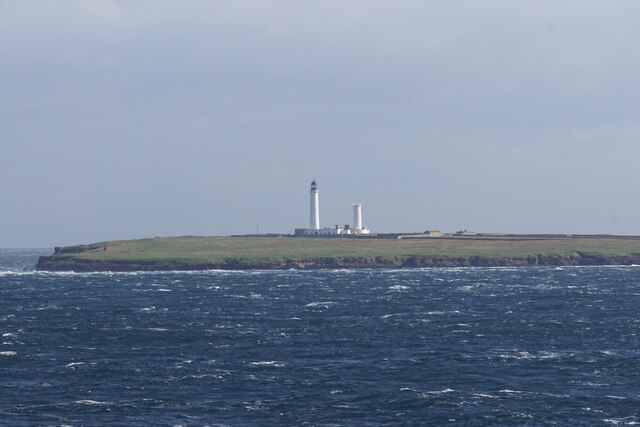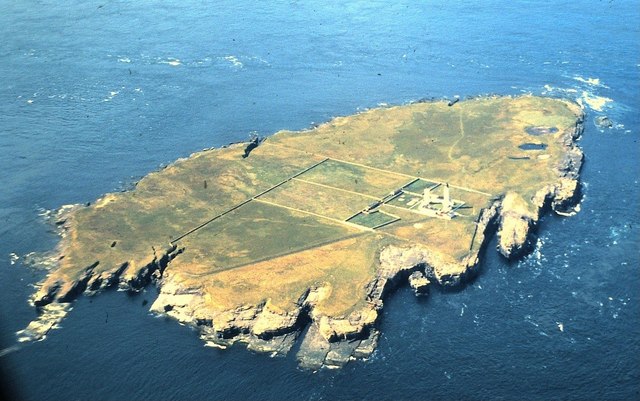Louther Skerry
Island in Orkney
Scotland
Louther Skerry

Louther Skerry is a small uninhabited island located in the Orkney archipelago, off the northern coast of mainland Scotland. It lies approximately 30 kilometers northwest of the Orkney mainland and is part of the North Isles group of islands. Louther Skerry is a rocky outcrop with steep cliffs rising up to 50 meters above sea level.
The island is known for its abundant birdlife. It is home to a large colony of Atlantic puffins, which nest in burrows on the island's grassy slopes during the breeding season. Other seabirds that can be spotted on Louther Skerry include guillemots, razorbills, fulmars, and kittiwakes. The surrounding waters are also rich in marine life, attracting seals and various species of whales and dolphins.
Due to its remote location and rugged terrain, Louther Skerry has never been permanently inhabited. However, the island has historical significance as a navigational aid. In the early 19th century, a lighthouse was built on the island to guide ships through the treacherous waters of the Pentland Firth. The lighthouse, which still stands today, is automated and maintained by the Northern Lighthouse Board.
Access to Louther Skerry is restricted to authorized personnel only, as it is a protected area for wildlife conservation. However, visitors can admire the island's beauty from afar by taking boat trips or participating in birdwatching tours in the surrounding waters. Louther Skerry offers a unique opportunity to experience the untamed beauty of the Orkney Islands and observe a diverse array of seabirds in their natural habitat.
If you have any feedback on the listing, please let us know in the comments section below.
Louther Skerry Images
Images are sourced within 2km of 58.679444/-2.8993654 or Grid Reference ND4777. Thanks to Geograph Open Source API. All images are credited.




Louther Skerry is located at Grid Ref: ND4777 (Lat: 58.679444, Lng: -2.8993654)
Unitary Authority: Orkney Islands
Police Authority: Highlands and Islands
What 3 Words
///chromatic.backup.wipes. Near John o' Groats, Highland
Nearby Locations
Related Wikis
Pentland Skerries
The Pentland Skerries (Old Norse: Pettlandssker) are a group of four uninhabited islands lying in the Pentland Firth, northeast of Duncansby Head and south...
SM U-18
SM U-18 was one of 329 submarines serving in the Imperial German Navy in World War I. U-18 engaged in the commerce warfare in the First Battle of the Atlantic...
Muckle Skerry
Muckle Skerry is the largest of the Pentland Skerries that lie off the north coast of Scotland. It is home to the Pentland Skerries Lighthouse. Muckle...
Tomb of the Eagles
The Tomb of the Eagles, or Isbister Chambered Cairn, is a Neolithic chambered tomb located on a cliff edge at Isbister on South Ronaldsay in Orkney, Scotland...
Have you been to Louther Skerry?
Leave your review of Louther Skerry below (or comments, questions and feedback).










